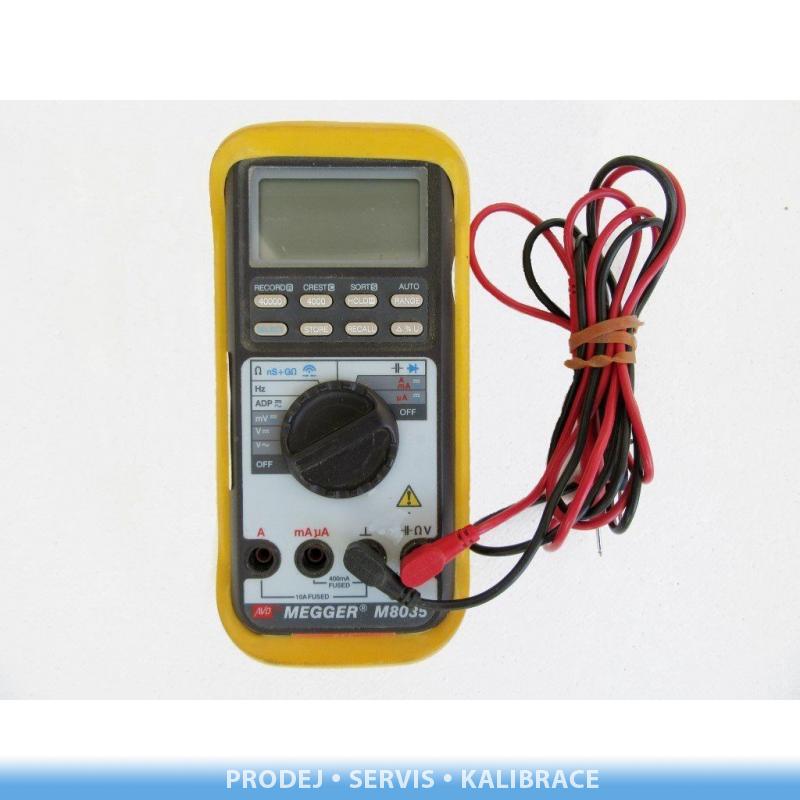Megger M8035 - multimetr
The Megger M7000/M8000 Series
Poskytujeme kalibraci měřících přístrojů v naší akreditované kalibrační laboratoři elektrických veličin K 2356
Poptat kalibraciThe Megger M7000/M8000 Series of advanced analog/digital multimeters use the latest microprocessor technology to provide the most comprehensive measuring ranges and features in a hand held instrument.
There are four instruments in the range, the two M7000 models are for more general applications yet still incorporate many advanced features, whereas the M8000 models have been designed to provide greater accuracy with extensive additional measuring capabilities.
The M7000 units offer rugged dependability for use in field conditions. Both the M7027 and M7029 are supplied in rugged yellow cases with wrap around rubberised holsters for added protection against mishandling. The main difference between the models is that the M7027 has a basic accuracy of 0.3% and the M7029 has a basic accuracy of 0.2%. Both models have dual displays and the choice of operation in the 4,000 count or the higher resolution 40,000 count mode.
The M8000 models provide more advance features for applications requiring more extensive measuring capabilities. The M8037 is the top of the range instrument it measures true rms, a.c. + d.c. and a.c. voltage ranges, which more accurately measure voltage values regardless of the waveforms. Square, sawtooth, triangle, pulse trains, spikes as well as distorted waveforms with the presence of harmonics can all be measured accurately.
There are three different relative modes to choose from; Relative Zero, Relative Percentage and Relative per Unit. In Relative Zero mode the user is allowed to offset the meter measurements with a relative reference value, therefore subtracting this reference from any further measurement. In Relative Percentage change mode the bar graph automatically indicates ±200% or ±20% for full scale changes with respect to the Relative Reference value which becomes centre zero point. This simplifies zero, peaking, nulling measurements and is excellent for fine adjustments. The final relative range is Relative per Unit which shows the ratio of measuring values to the relative base value. For example measuring the parallel capacitance of co-axial cable or parallel wire in conjunction with the Relative per Unit mode, helps estimate the total cable length or pinpoint cable breakdown locations.
